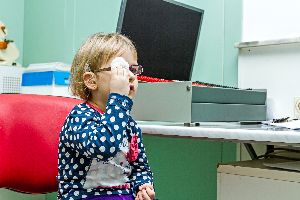
As a parent, you care about your child's eyesight, encouraging them to eat healthily and regularly visit their optometrist. You may have heard of amblyopia, a common condition also known as lazy eye, which can cause vision to weaken in one of the organs. Here's what you should know about this ailment.
What to Know About Amblyopia
What is amblyopia?
Amblyopia occurs when one eye becomes weaker than the other during infancy or childhood. The condition worsens as the brain favors the stronger eye, causing the other to weaken. Vision through the ailing organ becomes blurrier and can lead to blindness if left untreated. Early screening for the condition enables the most effective treatment.
What are its signs and symptoms?
Until an optometrist tests your child's vision, you might not know they have the condition. Signs can include a drooping eyelid, crossed eyes, and frequently shutting one eye. You may also notice your child often bumping into items on a particular side. Some children also experience a significant difference in farsightedness or nearsightedness between their two eyes.
What are the risk factors and causes of amblyopia?

Amblyopia can arise due to premature labor, low birth weight, family history of the condition, or developmental disabilities. However, doctors cannot always identify what causes the ailment. Sometimes it is due to the way light passes through the eye. Amblyopia usually occurs with:
- Astigmatism: A condition where the cornea is curved.
- Farsightedness: A visual problem where the child has trouble seeing objects close at hand.
- Nearsightedness: A condition where someone has difficulty viewing items far away.
How do doctors diagnose and treat the condition?
Screening your child at ages 6 months and 3 years will help optometrists catch amblyopia. Kids should also receive exams once a year after they start school. During the vision tests, the doctors will look at your young one's ability to see well equally with each eye. They'll also check that the organs move smoothly and properly together and that nothing blocks the light coming through them.
Treatment is most effective when started early. Often it involves wearing an eye patch or glasses. The tool forces the brain to use the weaker eye, strengthening the organ. In mild cases, eye drops containing atropine blur the vision in the strong eye temporarily to improve vision in the weaker one.
If your child needs an eye exam and screening for amblyopia, visit West Valley Vision Center in Fairbanks, AK. These knowledgeable and reputable optometrists offer children and adults a wide range of vision care services, from routine eye exams to eye surgery. For more information on how they can treat your young one, visit their website. Call (907) 479-4700 to schedule an appointment.
About the Business
Have a question? Ask the experts!
Send your question

